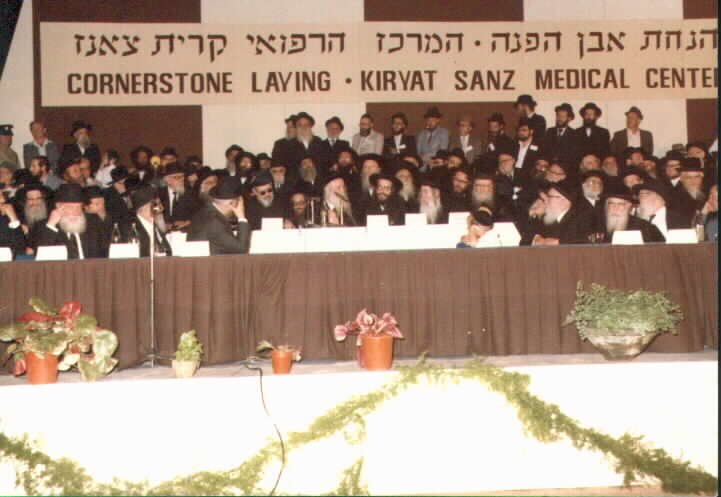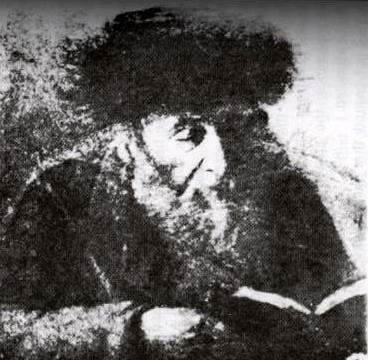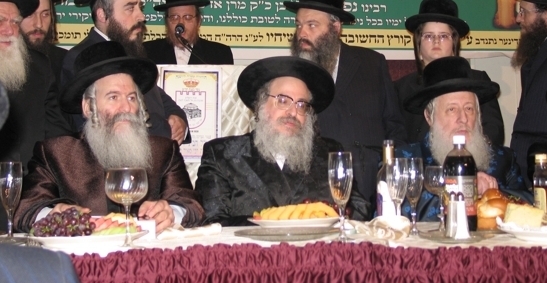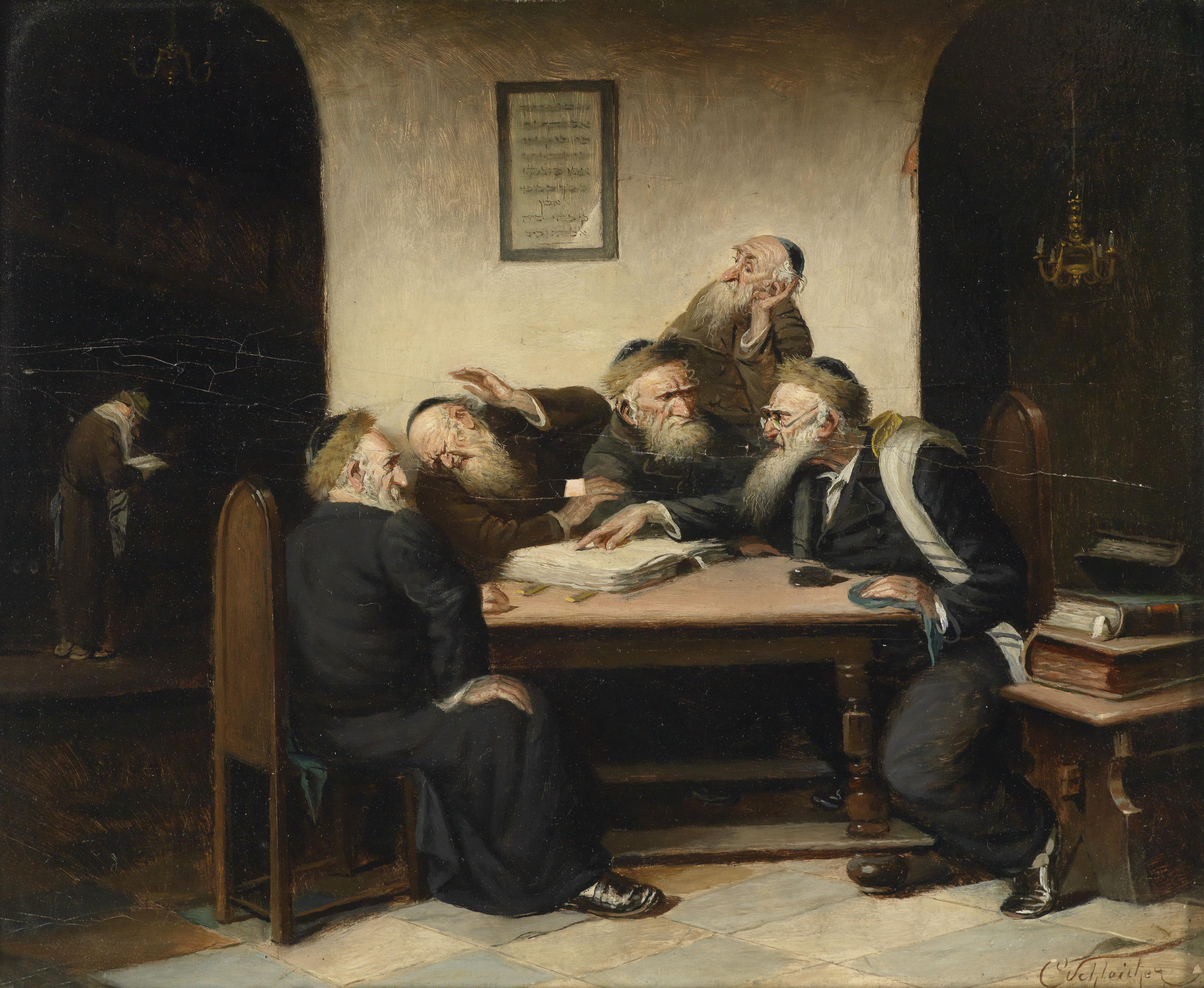|
Shmuel Dovid Halberstam
Rabbi Shmiel Dovid Halberstam ( he, שמואל דוד הלברשטאם), also known as the Sanz-Klausenberger Rebbe, is the younger son and one of the successors of Rabbi Yekusiel Yehudah Halberstam, the previous Klausenberger Rebbe. He resides in Brooklyn, New York. Biography He is one of seven children born in his father's second marriage to Chaya Nechama Ungar, daughter of the Nitra Rav, Rabbi Shmuel Dovid Ungar. He was named after his mother's father, who was murdered in the Holocaust. His older brother, Rabbi Zvi Elimelech Halberstam, is the Sanzer Rebbe of Israel, and he also has five sisters. He married Tzipora Weider, daughter of Rabbi Aharon Wieder, the Linzer Rav, who was a long-time dayan in the Klausenberger ''beis din'' (rabbinical court) in America.Donn, Yochonon. ''The Linzer Rav, Harav Aharon Wieder, zt"l''. Hamodia American News, 25 March 2010, p. B55. Rabbi Halberstam is the leader of North American operations for the Mifal HaShas Torah study network foun ... [...More Info...] [...Related Items...] OR: [Wikipedia] [Google] [Baidu] |
Yekusiel Yehudah Halberstam
Yekusiel Yehudah Halberstam (January 10, 1905 – June 18, 1994) was an Orthodox rabbi and the founding rebbe of the Sanz-Klausenburg Hasidic dynasty. Halberstam was one of the youngest rebbes in Europe, leading thousands of followers in the town of Klausenburg, Romania, before World War II. His wife, eleven children and most of his followers were murdered by the Nazis while he was incarcerated in several concentration camps. After the war, he moved to the United States and later Israel. Halberstam rebuilt Jewish communal life in the displaced persons camps of Western Europe. He also re-established his dynasty in the United States and Israel. Halberstam founded a Haredi neighborhood in Israel and a Sanz community in the United States. Additionally, Halberstam established a hospital in Israel that followed Jewish law. He also started a new family after a second marriage and the birth of seven more children. Early life Yekusiel Yehudah Halberstam was born in 1905 in the town of ... [...More Info...] [...Related Items...] OR: [Wikipedia] [Google] [Baidu] |
Beth Din
A beit din ( he, בית דין, Bet Din, house of judgment, , Ashkenazic: ''beis din'', plural: batei din) is a rabbinical court of Judaism. In ancient times, it was the building block of the legal system in the Biblical Land of Israel. Today, it is invested with legal powers in a number of religious matters (''din Torah'', "matter of litigation", plural ''dinei Torah'') both in Israel and in Jewish communities in the Diaspora, where its judgments hold varying degrees of authority (depending upon the jurisdiction and subject matter) in matters specifically related to Jewish religious life. History Rabbinical commentators point out that the first suggestion in the Torah that the ruler divest his legal powers and delegate his power of judgment to lower courts was made by Jethro to Moses (Exodus ). This situation was formalised later when God gave the explicit command to "establish judges and officers in your gates" ( Deuteronomy ). There were three types of courts (Mishnah, trac ... [...More Info...] [...Related Items...] OR: [Wikipedia] [Google] [Baidu] |
Year Of Birth Missing (living People)
A year or annus is the orbital period of a planetary body, for example, the Earth, moving in its orbit around the Sun. Due to the Earth's axial tilt, the course of a year sees the passing of the seasons, marked by change in weather, the hours of daylight, and, consequently, vegetation and soil fertility. In temperate and subpolar regions around the planet, four seasons are generally recognized: spring, summer, autumn and winter. In tropical and subtropical regions, several geographical sectors do not present defined seasons; but in the seasonal tropics, the annual wet and dry seasons are recognized and tracked. A calendar year is an approximation of the number of days of the Earth's orbital period, as counted in a given calendar. The Gregorian calendar, or modern calendar, presents its calendar year to be either a common year of 365 days or a leap year of 366 days, as do the Julian calendars. For the Gregorian calendar, the average length of the calendar year (the ... [...More Info...] [...Related Items...] OR: [Wikipedia] [Google] [Baidu] |
American Hasidic Rabbis
American(s) may refer to: * American, something of, from, or related to the United States of America, commonly known as the "United States" or "America" ** Americans, citizens and nationals of the United States of America ** American ancestry, people who self-identify their ancestry as "American" ** American English, the set of varieties of the English language native to the United States ** Native Americans in the United States, indigenous peoples of the United States * American, something of, from, or related to the Americas, also known as "America" ** Indigenous peoples of the Americas * American (word), for analysis and history of the meanings in various contexts Organizations * American Airlines, U.S.-based airline headquartered in Fort Worth, Texas * American Athletic Conference, an American college athletic conference * American Recordings (record label), a record label previously known as Def American * American University, in Washington, D.C. Sports teams Soccer * B ... [...More Info...] [...Related Items...] OR: [Wikipedia] [Google] [Baidu] |
Rebbes Of Sanz-Klausenberg
A Rebbe ( yi, רבי, translit=rebe) or Admor ( he, אדמו״ר) is the spiritual leader in the Hasidic movement, and the personalities of its dynasties.Heilman, Samuel"The Rebbe and the Resurgence of Orthodox Judaism."''Religion and Spirituality (Audio)''. UCTV, 20 Oct 2011. web. 31 Jul 2013. The titles of Rebbe and Admor, which used to be a general honor title even before the beginning of the movement, became, over time, almost exclusively identified with its Tzaddikim. Terminology and origin Usage Today, ''rebbe'' is used in the following ways: # Rabbi, a teacher of Torah – Yeshiva students or ''cheder'' (elementary school) students, when talking to their teacher, would address him with the honorific ''Rebbe'', as the Yiddish-German equivalent to the Hebrew word ''rabbi'' ( ' ). # Personal mentor and teacher—A person's main Rosh Yeshiva, Yeshiva teacher, or mentor, who teaches him or her Talmud and Torah and gives religious guidance, is referred to as ''rebbe'' () ... [...More Info...] [...Related Items...] OR: [Wikipedia] [Google] [Baidu] |
Sanz (Hasidic Dynasty)
Sanz (or Tsanz, yi, צאנז) is a Hasidic dynasty originating in the city of Sanz ( Nowy Sącz) in Galicia. The dynasty was founded by the rebbe Rabbi Chaim Halberstam (1793–1876) who was the rabbi of Nowy Sącz and the author of the work ''Divrei Chaim'' by which name he is known as well. Rabbi Chaim was a disciple of Rabbi Naftali Zvi of Ropshitz. He opened his court after the death of Rabbi Asher Yeshaya of Ropshitz, son-in-law of Rabbi Naftali Tzvi. After his demise (25 Nisan 5636, 19 April 1876), his six sons and his seven sons-in-law built courtyards with new names in the cities where they served as rabbis, and their chassidim separated, but most of them went to his eldest son, Rabbi Yechezkel Shraga Halberstam of Shinova. His fourth son, Rabbi Aharon, remained to serve as rabbi and rebbe in Sanz, but he was known as the 'Rav of Kreiz', that is, the rabbi of the province, a title he already had in his father's life. In the generations that followed, there were ... [...More Info...] [...Related Items...] OR: [Wikipedia] [Google] [Baidu] |
Rabbi Meir
Rabbi Meir ( he, רַבִּי מֵאִיר) was a Jewish sage who lived in the time of the Mishnah. He was considered one of the greatest of the Tannaim of the fourth generation (139-163). He is the third most frequently mentioned sage in the Mishnah. His wife Bruriah is one of the few women cited in the Gemara. Biography He was born in Asia Minor. According to the Talmud, his father was a descendant of the Roman Emperor Nero who, it is said, escaped death at the time of his deposition and became subsequently a convert to Judaism. Twenty four thousand students of Rabbi Akiva died in a plague. He went and found five new students and Rabbi Meir was one of them. The four others were: Rabbis Judah ben Ilai, Eleazar ben Shammua, Jose ben Halafta, and Shimon bar Yochai. Meir began to study very early in life. At first he entered the school of Rabbi Akiva, but, finding himself not sufficiently prepared to grasp the lectures of that great master, he went to the school of Rabbi Ishmael, ... [...More Info...] [...Related Items...] OR: [Wikipedia] [Google] [Baidu] |
Kolel Chibas Yerushalayim
Kolel Chibas Jerusalem ( he, כולל חיבת ירושלים), one of the numerous charities known as Charity of Rabbi Meyer Ba'al Ha-Nes — named after the great 2nd century Jewish sage Rabbi Meir — is a large charitable organization based in Jerusalem's Meah Shearim neighbourhood and which supports Jews who have emigrated to the Holy Land from Galicia, a region spanning southeastern Poland and western Ukraine. History Founding The organization was established in 1830 by Jews from Galicia, Austrian Empire, to support full-time Torah students of the Yishuv haYashan. From the outset, the organization received wide support in the Galician Jewish community, with the rabbis of Sanz, Ropshitz, Dinov, and Belz actively involved in fundraising. Small charity boxes were distributed to many Jewish homes. Families would donate however much they could, even it were only a few coins. A few times a year a local representative gabbai would make the rounds from house to house to collect ... [...More Info...] [...Related Items...] OR: [Wikipedia] [Google] [Baidu] |
Torah Study
Torah study is the study of the Torah, Hebrew Bible, Talmud, responsa, rabbinic literature, and similar works, all of which are Judaism's Sifrei kodesh, religious texts. According to Rabbinic Judaism, the study is done for the purpose of the ''mitzvah'' ("commandment") of Torah study itself. This practice is present to an extent in all religious branches of Judaism, and is considered of paramount importance among religious Jews. Torah study has evolved over the generations, as lifestyles changed and also as new texts were written. Traditional view In rabbinic literature, a heavy emphasis is placed on Torah study for Jews, Jewish males, with women being exempt. This literature teaches an eagerness for such study and a thirst for knowledge that expands beyond the text of the Tanakh to the entire Oral Torah. Some examples of traditional religious teachings: * The study of Torah is "equal to all" of the ''Mitzvah, mitzvot'' of Honour thy father and thy mother, honouring one's pare ... [...More Info...] [...Related Items...] OR: [Wikipedia] [Google] [Baidu] |
Hamodia
''Hamodia'' ( he, המודיע – "''the Informer''") is a Hebrew-language daily newspaper published in Jerusalem. A daily English-language edition is also published in the United States, and weekly English-language editions in England and Israel. A weekly edition for French-speaking readers debuted in 2008. The newspaper's slogan is "The Newspaper of Torah Jewry". It comes with two magazines, ''Inyan'' and ''Prime''. ''Haaretz'', the newspaper of Israel's secular left, describes ''Hamodia'' as one of the "most powerful" newspapers in the Haredi community. History ''Hamodia'' was founded in 1950 by Rabbi Yehuda Leib Levin, son of the Agudat Israel leader Rabbi Yitzhak-Meir Levin of Warsaw and Jerusalem. Its current director general is Rabbi Chaim Moshe Knopf, and its deputy director general is Knopf's son, Rabbi Elazar Knopf. English-language edition The English-language edition of ''Hamodia'' is published by Levin's daughter, Ruth Lichtenstein. It was first printed on February ... [...More Info...] [...Related Items...] OR: [Wikipedia] [Google] [Baidu] |
Zvi Elimelech Halberstam
Zvi Elimelech Halberstam (born 1952) is the present Sanz Rebbe of Netanya, Israel. He is also known as the Sanzer Rebbe. He is the eldest son of Rabbi Yekusiel Yehudah Halberstam, the first Sanz-Klausenberger Rebbe, who in his will divided the leadership of the Klausenburger Hasidim between his two sons, Rabbi Zvi Elimelech and Rabbi Shmuel Dovid (the present Sanz-Klausenburger Rebbe of Brooklyn). He holds his court in the Kiryat Sanz, Netanya neighborhood founded by his father. Biography Halberstam was a child of his father's second marriage in 1947 to Chaya Nechama Ungar, the orphaned daughter of the Nitra Rav, Rabbi Shmuel Dovid Ungar.Landesman, Yeruchem. ''The Wedding that Changed Despair to Hope''. Mishpacha, 11 November 2009, pp. 30-34. This marriage produced two sons — Rabbi Zvi Elimelech and Rabbi Shmuel Dovid — and five daughters. Leadership Upon his father's death in 1994, Rabbi Zvi Elimelech became the spiritual leader of the Sanz community in Israel. He is ... [...More Info...] [...Related Items...] OR: [Wikipedia] [Google] [Baidu] |
Klausenberg (Hasidic Dynasty)
Klausenburg, also known as Sanz-Klausenburg, is a Hasidic dynasty that originated in the Transylvanian city of Cluj-Napoca (german: Klausenburg, hu, Kolozsvár), today in Romania. At the behest of Rabbi Yekusiel Yehudah Halberstam, Klausenburger Rebbe from 1927–1994, the movement was split into two separate movements after his death, headed by his two sons. The Sanz-Klausenburger Hasidim are located in Borough Park, New York City, while the Sanzer Hasidim are based in Kiryat Sanz, Netanya, Israel. There are also followings in Los Angeles, California; Jerusalem; Stamford Hill, London; Antwerp; and Union City, New Jersey, and in the USA, in Borough Park, Williamsburg, Monsey, and Lakewood. Sanz-Klausenburg rabbinical lineage The Klausenburger Rebbes are descended from Rabbi Chaim Halberstam of Sanz, who was a disciple of Rabbi Naftoli Tzvi of Ropshitz. Rabbi Naftoli was a disciple of Rebbe Elimelech of Lizhensk author of ''Noam Elimelech''. Rebbe Elimelech was a discipl ... [...More Info...] [...Related Items...] OR: [Wikipedia] [Google] [Baidu] |






